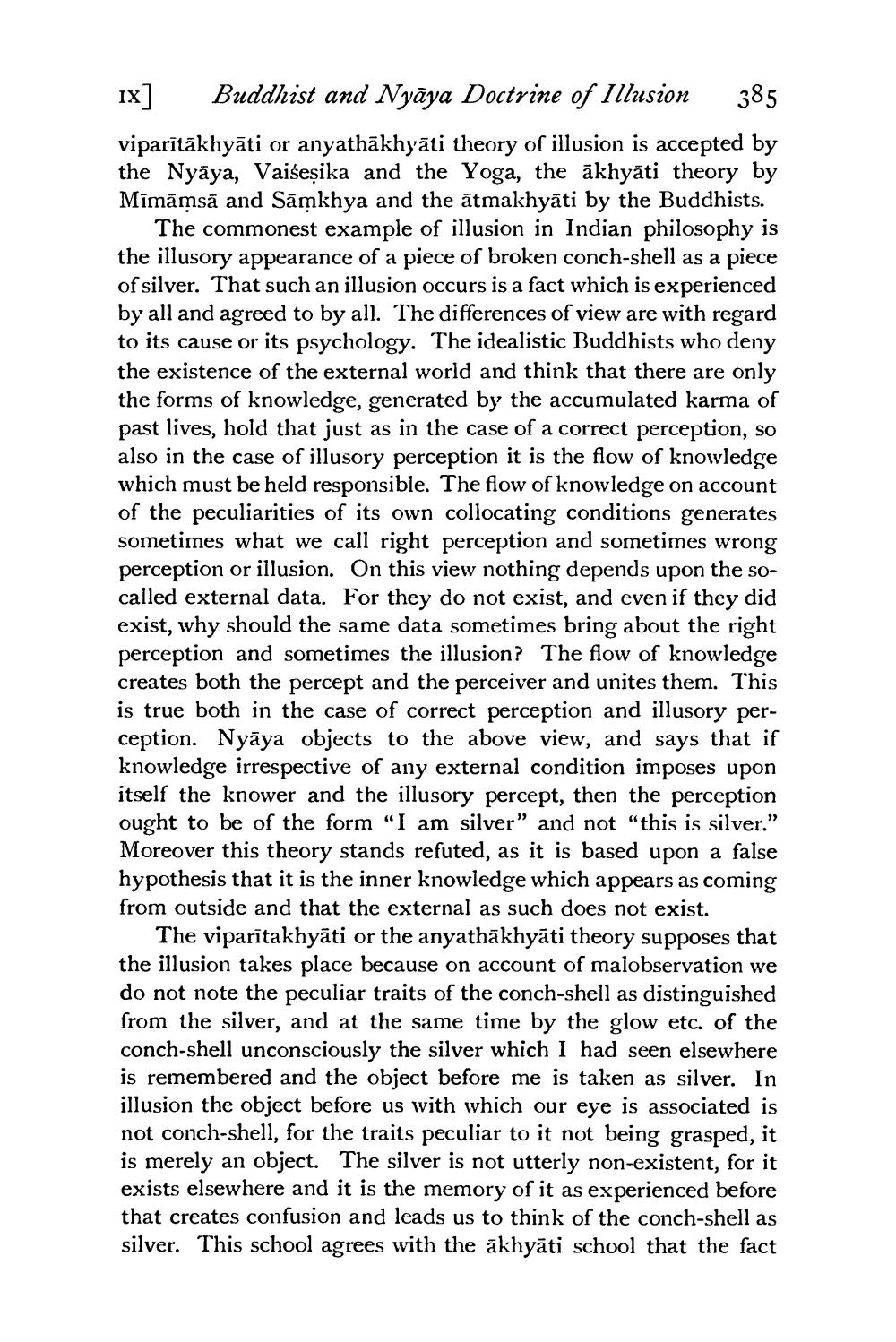________________
IX]
Buddhist and Nyaya Doctrine of Illusion
385
viparītākhyāti or anyathākhyāti theory of illusion is accepted by the Nyaya, Vaiseṣika and the Yoga, the akhyāti theory by Mīmāmsā and Sāmkhya and the ātmakhyāti by the Buddhists.
The commonest example of illusion in Indian philosophy is the illusory appearance of a piece of broken conch-shell as a piece of silver. That such an illusion occurs is a fact which is experienced by all and agreed to by all. The differences of view are with regard to its cause or its psychology. The idealistic Buddhists who deny the existence of the external world and think that there are only the forms of knowledge, generated by the accumulated karma of past lives, hold that just as in the case of a correct perception, so also in the case of illusory perception it is the flow of knowledge which must be held responsible. The flow of knowledge on account of the peculiarities of its own collocating conditions generates sometimes what we call right perception and sometimes wrong perception or illusion. On this view nothing depends upon the socalled external data. For they do not exist, and even if they did exist, why should the same data sometimes bring about the right perception and sometimes the illusion? The flow of knowledge creates both the percept and the perceiver and unites them. This is true both in the case of correct perception and illusory perception. Nyaya objects to the above view, and says that if knowledge irrespective of any external condition imposes upon itself the knower and the illusory percept, then the perception ought to be of the form "I am silver" and not "this is silver." Moreover this theory stands refuted, as it is based upon a false hypothesis that it is the inner knowledge which appears as coming from outside and that the external as such does not exist.
The viparitakhyāti or the anyathākhyāti theory supposes that the illusion takes place because on account of malobservation we do not note the peculiar traits of the conch-shell as distinguished from the silver, and at the same time by the glow etc. of the conch-shell unconsciously the silver which I had seen elsewhere is remembered and the object before me is taken as silver. In illusion the object before us with which our eye is associated is not conch-shell, for the traits peculiar to it not being grasped, it is merely an object. The silver is not utterly non-existent, for it exists elsewhere and it is the memory of it as experienced before that creates confusion and leads us to think of the conch-shell as silver. This school agrees with the ākhyāti school that the fact




